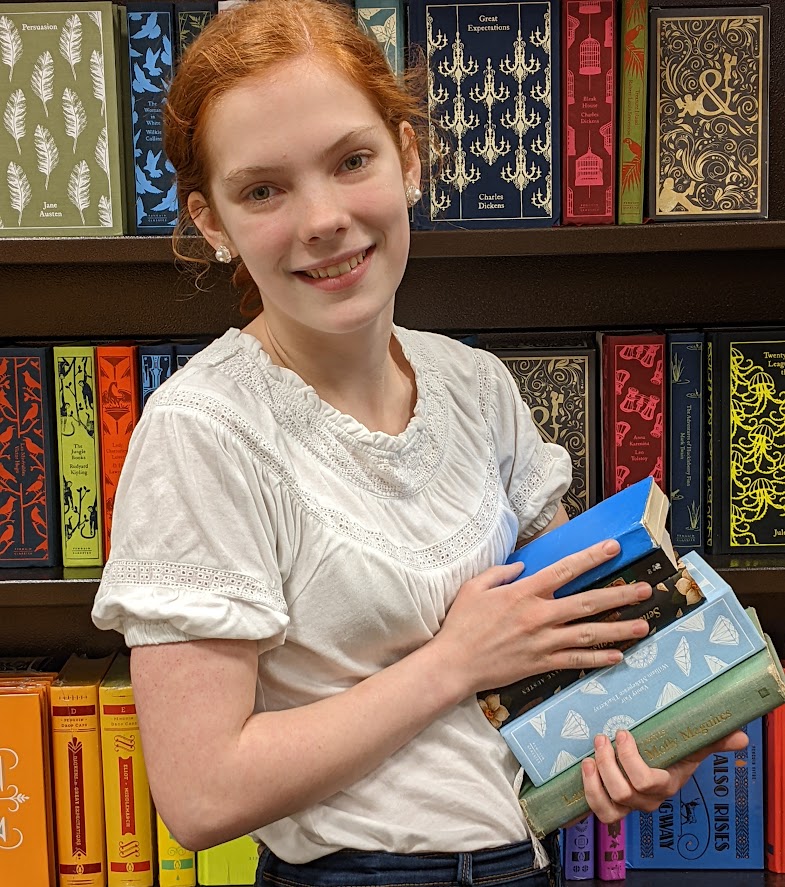Character development can be so difficult to maintain. It is easy to highlight flaws and areas of growth in your characters throughout the first few pages. But after the action-packed plot takes over and an exciting series of events plunges your characters (and hopefully your readers) headlong into an amazing story, character development can get lost.
But it’s also incredibly important. Character development is there to show the theme of a story. You follow a character as he learns a truth about the world so that hopefully you come to realize that truth, too. Without character development, the theme gets lost and the entire point of the story is vague.
And even if character development isn’t lost, how can you hint to your readers right at the beginning that your story has direction and purpose? How can you promise that your book will stand out, and that your series won’t lose track of its theme?
To answer this question, we’ll be looking at the Harry Potter series as a whole, but specifically how the first book handles character development.
The First Harry Potter Book
Within the first Harry Potter book, there is actually a good amount of character development, especially as far as the relationships between the three main characters. Although Ron and Harry are good friends from almost the moment they step on the Hogwarts Express, both of them clearly view Hermione as a stuck-up know-it-all. It is true that although Hermione is exceptionally intelligent, hard-working, and devoted to the rules, she is also arrogant. Simply put, she’s the smartest person in their class, and she knows it.
At first Ron and Harry are uninterested in picking on her, since they have much more malicious enemies within the school and are more exasperated with Hermione than anything else, but tensions between them grow. Eventually, a few poorly timed comments from Ron send Hermione crying into the bathroom, friendless and alone.
When a troll attacks the school later that night, Ron and Harry are rushed towards their dormitories — until then they realize that Hermione hasn’t returned. When the troll is heard stomping around the girl’s bathrooms, Harry and Ron know they have to warn her before it’s too late.
The students rush down to find Hermione cornered by the troll, and all three quickly use their wits in an attempt to knock out a troll three times their size. At last they succeed, and the teachers rush in just as it crashes to the ground. And so according to J. K. Rowling, “There are some things you can’t share without ending up liking each other, and knocking out a twelve-foot mountain troll is one of them.”
As the friendship develops throughout the book, Ron grows to be less selfish. By the climax he is actually willing to sacrifice himself so that the rest of his friends can continue on to stop Voldemort. And later on, even Hermione ends up giving her impassioned speech about the value of friendship, courage, and bravery over smarts and high grades.
Both of them learned a valuable (albeit a bit cheesy) lesson. So far, the series was doing well. Certainly throughout their next, more serious adventures, the themes the characters explored would become deeper and more meaningful as they developed?
Unfortunately not.
After the first book, there were enough exciting adventures to fill each book that character development took the backseat. And certainly there are challenges and dynamic changes throughout their relationships. Both Harry and Ron spend a decent amount of the third book ignoring Hermione, and of course by the last book Ron and Hermione are married. But as far as character development goes, the series is greatly lacking. And although there is plenty of inter-character tension and fast-paced excitement from the action-filled plot, the characters remain mainly the same over the seven book series. 11-year-old Harry would have made the same decisions as 17-year-old Harry.
I’ve already written an article about how to show character development is permanent, but how do you get to the character development in the first place, especially over a long series? There doesn’t have to be shocking changes to each character by the end of every book. But how do you promise your readers that you will improve your characters over the series?
Method #1: Grow Your Character’s Flaws Over The Entire Series
This method works for shorter or simpler series. The key is to grow your protagonist’s flaw over the series. Strengthen their misbeliefs about the world by letting them make mistakes and…. Get away with them. Then you can drop a bombshell epiphany on them right before the climax, when they realize exactly what they’ve been doing wrong and how to fix it. This makes the climax so much more impactful because your readers get to watch a wrong be righted that has been growing throughout an entire series. The protagonist’s flaw is no longer just a box to be checked to save the protagonist from becoming a Mary Sue. Now it’s a defining part of the protagonist’s personality and viewpoint. So when your character reaches their crisis and realizes they must face this flaw, they aren’t just facing a part of them that they consider to be rather distasteful — they’re facing a nearly unbeatable battle within them. And that sort of off-the-charts conflict can create some of the most compelling climaxes in fiction.
For Harry, I might have let his hero complex become a flaw that eventually grew too big to ignore. Then, in the final book, when Harry has to be a hero by sacrificing everything in private and without any recognition for it at all, I would have let his arrogance crumble around him as he struggles with the impossible choice that he is forced to make. I would have made it so that each event in the series points to his growing self-righteousness and his need to change, which he would painfully ignore until it was too late — and until he had to give up everything to make it right.
Method #2: (My personal favorite): Explore Different Aspects of Your Theme Throughout the Series
But sometimes growing your protagonist’s flaw throughout the series can become old. If a series is rather long, sometimes it is better to give each book its own smaller character arc throughout the series, especially when exploring a complex theme.
For Harry Potter, it might have been best to let Harry explore the true meaning of heroism. He could enter the first book assuming they’re all super heroes with capes or at least skilled magicians dueling dark wizards with no regard to their own safety. Each book would have grown his understanding of what heroism means by demonstrating different types of heroism from the different characters. He would learn what heroism really is as he learns more about what his mother gave up so that he could live, what Sirius was willing to risk to seek justice for the Potters’ deaths, how even Voldemort views himself as the hero of his own story, and how Snape was a hero by losing every friend and ally to convince Voldemort that he was worth his deepest trust and confidence. Each book, Harry would have earned a new piece to the theme until everything fell into place in the final pages of the last book, when he had to demonstrate the most challenging heroism of all. But now that he knows what heroism truly is — and what it isn’t.
Or maybe he could have explored the meaning of selfless love, or the worth of a strong family. There are so many possible themes within each story, and so many layers to explore within each theme. Both methods are awesome ways to highlight your book’s theme and make sure that character truly learns something with each event of the story. Give your character a lasting flaw, or dive into the layers of your theme to create spell-binding conflict and a protagonist that your readers will remember long after they put the book down.



What series have you read where they did the character development well? Which technique did they use? And how was the article? Too sweet? Too sour? Just right? Comment below and let us know!


Hi! My name is Mara, and I’m a Christian artist, violinist, and blogger. I remember the day that I decided that I would learn something new about what makes a good story from every book I picked up — whether it was good, bad, or a mixture of both. I use this blog as a way of sharing some of the tips and tricks I’ve learned, and highlight which books, cartoons, and movies have taught me the most about writing an awesome story.

